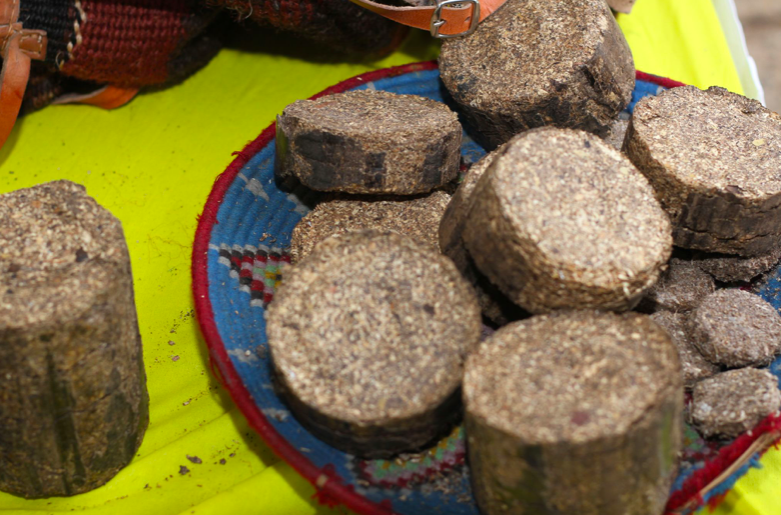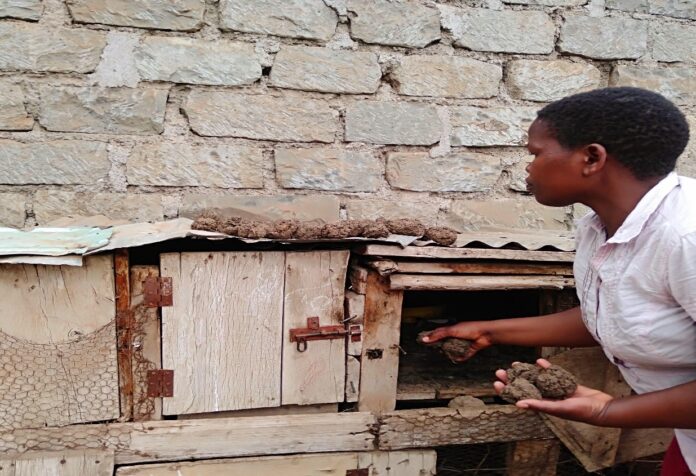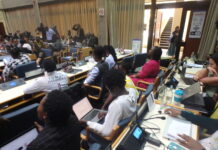By Arasha Soila
Kajiado County, Kenya: It is mid-day, the sun is already out and hot in Kenya’s Kajiado County. Monica Olakhi, a mother of two is seated outside as she recalls how what seemed like a normal day almost turned fatal.
“It was back in 2019 when I traveled back to my maternal home in Busia County. I was living in a six-by-six makeshift rental space. Just like any other day, I got to the house, locked the door, and shut the small window as it was at night. I then lit my charcoal jiko and started preparing supper for my two-year-old son,” Olakhi narrates.
The mother of two continues unfolding the occurrence of the events. “Just when I was done cooking and ready to serve the food, I noticed my son had fallen asleep. I woke him up but he wasn’t responding. The thought of my son suffocating because of the jiko, had not crossed my mind,” she reveals. Olakhi says she panicked and went into a state of confusion, not knowing what to do. As all this was happening, she got unconscious and her legs felt paralyzed to even reach out to the door.
Not being able to move, with labored breathing, Olakhi helplessly watched her son laying down unconsciously as if dead. She does not have any memory of what happened next. Against all odds, she and her son survived the ordeal. “We found ourselves in the morning, still in the same place. It was by God’s grace we survived as little charcoal had remained in the jiko. That was my turning point,” she says.
Notably, about 80% of Kenyans rely on biomass such as firewood and charcoal to meet their energy needs. The reliance on the aforementioned traditional biomass energy sources possesses serious health effects such as chronic respiratory diseases and eye irritation.
According to a report by World Health Organization (WHO), globally, 2.4 Billion people cook using open fires or inefficient stoves that generate harmful household air pollution and of 3.2 million deaths reported by 2020 were due to household air pollution including 237,000 deaths of children under the age of 5 years.
Household air pollution contains hazardous pollutants like carbon monoxide which is produced when charcoal or firewood is burned which alters oxygen.

Additionally, the continued and increased use of charcoal and firewood has caused Kenya an annual loss of 10.3 million tonnes of wood intensifying the adverse implications of climate change. FAO attributes that the use of firewood and charcoal are great contributors to greenhouse gas emissions in Kenya equating to 30-40%.
Human activities, principally through emissions of greenhouse gases have unequivocally caused global warming, according to IPCC reports. The reports further state that continued greenhouse gas emissions will lead to increasing global warming, at an estimate of 1.5°C in the near term. The adoption of renewable energy sources plays an important role in providing energy in a sustainable manner while mitigating climate change.
This represents a section of households that have made a conscious shift to sustainable environment-friendly clean cooking solutions. Consequently reaping the associated benefits, she has embarked on making charcoal briquettes after learning how to produce them from her long-term friend. With now a smile on her face, the mother of two goes ahead and illustrates the production process.
“I get charcoal dust from my employer which is disposed of after the charcoal is finished. With every sack of charcoal they use, I can get two-kilogram tins of dust. I then mix the charcoal dust with enough soil adding water to make the dough,” she explains.
She explains how she molds them into sizable, round solid mass forms that suit her needs. After making the briquettes, she airs them outside directly to the sun so that they can dry up well. During the sunny weather, she tells me that the briquettes can take just three days to dry unlike when it’s cold. “On cold days, it takes longer to dry like a week, and some days,” she adds.
“These briquettes, unlike firewood and charcoal do not produce smoke. I can even cook with them in my house as long there is proper ventilation. Importantly they burn longer than charcoal. With only four to five briquettes, I am able to cook my meal and the remaining to heat water for bathing,” she says.
She emphasizes that the use of briquettes is a matter of economic survival. “I don’t have to use gas as the prices have shot up with this economy,” Monica notes. Embracing the production of briquettes has also saved her from the hurdles of going out to fetch firewood.

Briquettes are gaining popularity for being cheaper and mitigating climate change. Alternative raw materials for making briquettes include sawdust, wood chips, sugarcane waste, coffee husks, or cow dung. Briquettes are more sustainable and could reduce the pressure on forests.
“Growing up in Mathare, the food program was very instrumental to us, while going to school. Food is what kept me mainly in school as most of my friends dropped out. At some point later on we realized, there was a problem with the feeding program as the overall cost went to providing energy for cooking the food,” reveals Calvin Shikuku, CEO of Motobrix Innovation Centre.
Motobrix Innovation Centre aims at accelerating climate smart technology through peer-to-peer support of young people with skills to enable them start innovations that conserve the environment including recycling and renewable energy. He continues by saying that energy is generally very expensive and therefore he wanted to find a solution so that children can continue going to school.
“With almost 40% of waste being uncollected in the informal settlement, most of it ends up in the rivers and public spaces leading to waterborne diseases. We therefore saw the need to fix waste management by providing employment to young people and the end result is clean energy,” he expounds. Mr. Shikuku further emphasizes that they offer alternative solutions to the people in Mathare as raising climate awareness without providing practical solutions is not effective.
They collect readily available material like charcoal dust disposed of by charcoal vendors as it is a problem in the drainages. Additionally, they also collect waste papers from schools, sawdust from the carpenters locally, and remainders of cassavas also from the local market. “We also work with Informal Waste Collectors who sell to us the waste we need,” he states.
While clarifying the benefits, Mr. Shikuku asserts that briquettes produced from reused charcoal dust are smokeless as they are made from very fine particles, unlike charcoal. The comparison in terms of emissions, is that the carbon monoxide and CO2 produced is very low compared to charcoal.
Mr. Shikuku goes ahead and explains that they are working with schools to purchase their briquettes which they trade in with waste papers from the school. “We quantify the amount of waste we get in the schools then offer our briquettes at a subsidized cost which is way lower than the market prices. Through this initiative we are able to encourage schools to adopt clean cooking solutions for efficiency, cost-effectiveness, and also environment conservation,” he tells.
The climate defender says youth innovations also need support as they help solve environmental challenges.














